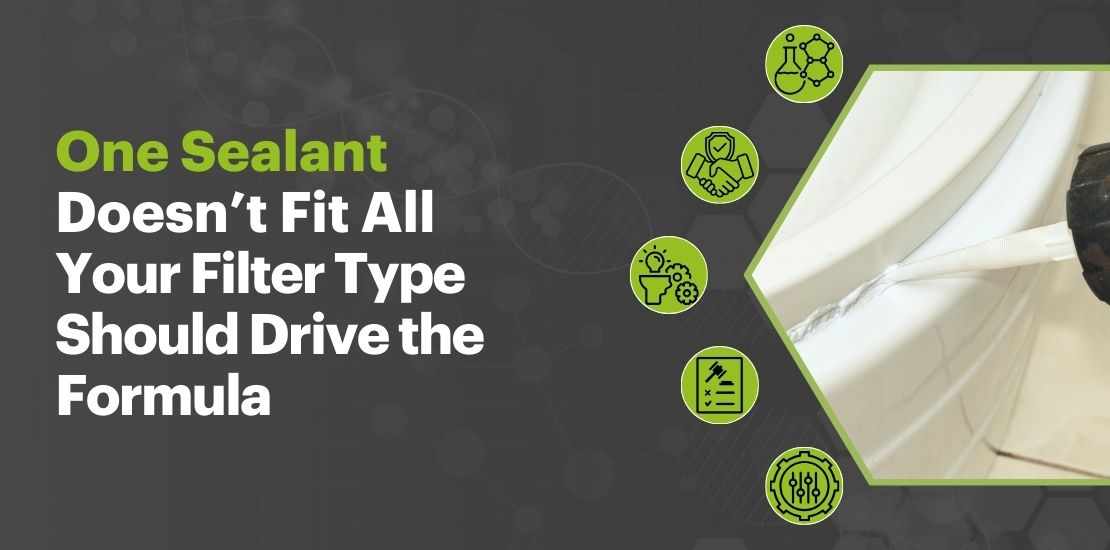- April 17, 2025
- Posted by: Mugdha
- Category: Uncategorized

Every filter does a different job.
Some deal with hot air.
Some are in constant contact with water
Some have to resist chemicals
And some need to be food-safe, solvent-resistant, or flexible enough to stay sealed after hundreds of pressure cycles.
Using the same sealant across all of these? That’s asking for trouble.
1. Your filter’s environment decides the chemistry.
If your filter goes into:
- A battery system: It might be exposed to solvents like NMP.
- A pool system: It is probably sitting in chlorinated water for months.
- A food application: It needs to be non-leaching and certified.
- An engine bay: It is going to experience constant heat and vibration.
Each of these situations needs a different base formulation for sealant The sealant has to fit the job, or it will break down, leak, or stop sealing altogether.
2. Bonding depends on what you’re sticking to.
Filter media isn’t all the same.
- Some are porous.
- Some are chemically resistant.
- Some just don’t like to bond with anything.
If you use the wrong sealant, it might not stick at all—or worse, it might react with the media or plastic housing and cause failures over time.
That’s why the surface chemistry of the sealant needs to match what you’re bonding.
3. How you make the filter also matters.
Sealants have to work with your process.
- Are you curing at room temperature or high heat?
- Do you need fast handling time on the line?
- Is there a need for flexibility after curing?
If the sealant doesn’t fit your production setup, it slows you down or causes quality issues.
4. Regulations aren’t optional.
If your filter is going into food, water, medical, or automotive use, you can’t use just any material.
You may need:
- Food contact approvals
- Low VOC content
- Temperature resistance
- Chemical stability under specific test conditions
And not every sealant out there can check those boxes—not without being tuned to the application.
That’s where VEE-CUSTOMIZE
We don’t believe in standard sealants for every filter.
We work backwards—from your application, your environment, and your production line—to create something that fits.
That could mean changing the base chemistry, curing profile, viscosity, flexibility, or all of the above.
Whatever the filter demands, we customize the sealant to match.
If your filters are doing different jobs, your sealants should too.
Let’s talk at FiltXPO about what your filter actually needs, and how we can customize it.
